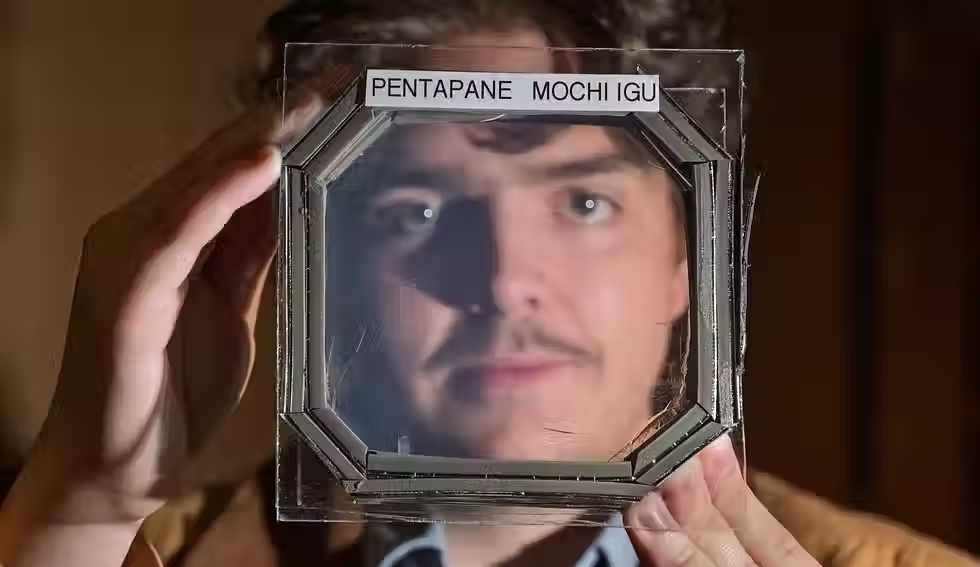Innovative computational method unveils high-performance ceramics for extreme environments
- Marine Le Bouar

- Jan 31, 2024
- 3 min read

An international research team has developed a method for rapidly discovering new types of materials that function at extremely high temperatures of several thousand degrees Celsius. These high-performance ceramics could one day form the basis for more robust coatings, batteries and radiation-resistant devices. Dr Rico Friedrich, research group leader at Dresden University of Technology (TUD) and the Helmholtz-Zentrum Dresden-Rossendorf (HZDR), made a key contribution to these promising results, which were recently published in the journal ‘Nature’.
Electronic devices that function at lava-like temperatures of several thousand degrees Celsius? A new class of high-performance materials could soon make this possible. A team of researchers led by materials scientists at Duke University (USA) has presented a computational method that can be used to rapidly develop hundreds of representatives of a new class of materials that are so heat-resistant and electronically stable that they could enable devices to function in extreme heat. These materials are ceramics made from so-called high-entropy metal carbonitrides or borides. This special type of compound forms highly disordered structures, so-called high-entropy phases. The random distribution of cations in the material leads to a high degree of reflection and interference of waves, resulting in special mechanical, electronic and thermal properties.
Using thermodynamic data to make precise predictions
Rico Friedrich from the Chair of Theoretical Chemistry at TUD and the HZDR Institute of Ion Beam Physics and Materials Research is part of this research consortium. He heads the DRESDEN-concept research group "Autonomous Materials Thermodynamics - AutoMaT", which is mainly concerned with the data-driven design of two-dimensional nanomaterials and the optimization of their electronic and magnetic properties. Friedrich carried out some of the extensive calculations for the new method called "Disordered Enthalpy-Entropy Descriptor" (DEED).
DEED is a formula that precisely weighs up both energetic and entropic influences, i.e. the disorder in a material, in the formation of these ceramics. This enables predictive power for the synthesizability of these complex systems across many material classes that far surpasses previous approaches. To optimize its mode of action, DEED requires a large amount of thermodynamic data on inorganic materials, such as that available in the AFLOW database, which contains around 3.5 million stored compounds. The stability of the new ceramics can be reliably evaluated in relation to this data.
Successful production in the laboratory

"In its first demonstration, DEED predicted the synthesizability of 900 new formulations of high-performance materials, 17 of which were subsequently successfully produced and tested in laboratories. The finished ceramics have a metallic appearance and dark grey or black look. They feel like metal alloys, such as stainless steel, and have a similar density. And although they look metallic, they are hard and brittle like conventional ceramics. They could form the basis for new wear- and corrosion-resistant coatings, thermoelectrics, batteries, catalytic converters and radiation-resistant devices," explains Dr Friedrich.
Building on these results, Rico Friedrich and his team want to investigate the properties of the new materials and their interactions at interfaces for potential electronic applications.
The group, which is part of the Dresden research alliance DRESDEN-concept, assumes that other researchers will also use DEED to optimize and test the properties of new ceramic materials for various applications. Given the incredible variety of potential properties and applications, they believe it could only be a matter of time before some of them reach commercial production. Reference Disordered enthalpy–entropy descriptor for high-entropy ceramics discovery
Simon Divilov, Hagen Eckert, David Hicks, Corey Oses, Cormac Toher, Rico Friedrich, Marco Esters, Michael J. Mehl, Adam C. Zettel, Yoav Lederer, Eva Zurek, Jon-Paul Maria, Donald W. Brenner, Xiomara Campilongo, Suzana Filipović, William G. Fahrenholtz, Caillin J. Ryan, Christopher M. DeSalle, Ryan J. Crealese, Douglas E. Wolfe, Arrigo Calzolari & Stefano Curtarolo




























Comments